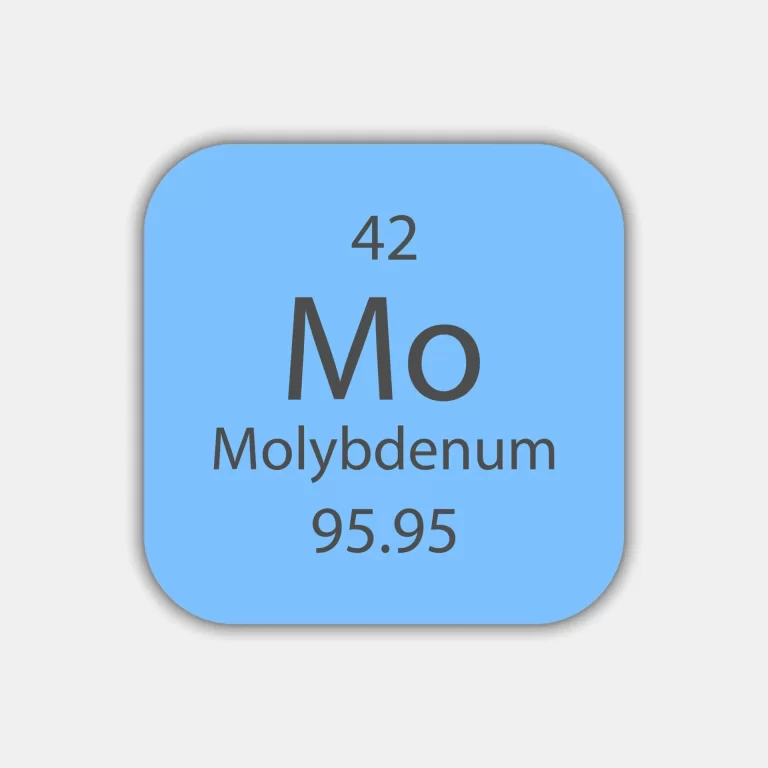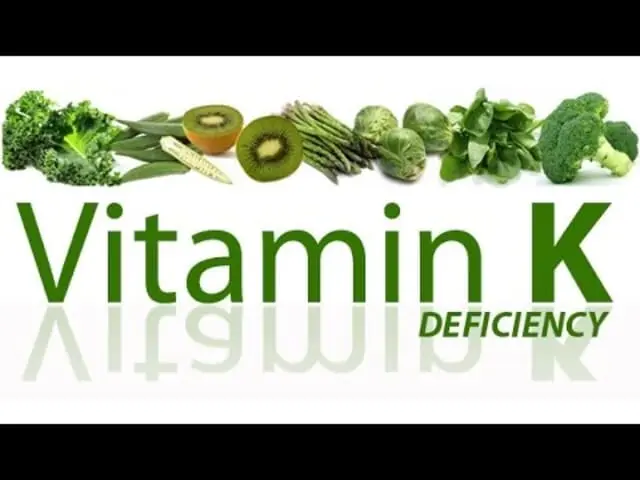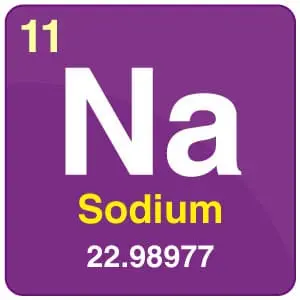Vitamin B6 (Pyridoxine, Pyridoxal, Pyridoxamine)
Introduction
Being a B vitamin, vitamin B6 is a necessary component of the diet. The phrase describes a class of six chemically related substances known as “vitamers” that can switch between different forms in biological systems.
Pyridoxal 5′-phosphate, its active form, is a cofactor in over 140 enzyme processes related to the metabolism of lipids, carbohydrates, and amino acids.
Pyridoxine is produced by plants in order to defend themselves from UV-B rays from sunlight and because it is necessary for the synthesis of chlorophyll.
Because they are unable to synthesize any of the several forms of the vitamin, animals must get it through their diet—either from plants or other animals.
The vitamin generated by gut bacteria is partially absorbed, but not enough to meet nutritional requirements.
The range of recommendations made by food regulatory bodies in different nations for adult humans is between 1.0 and 2.0 mg each day.
These same organizations have established safe upper limits, which vary by nation and can be as low as 25 mg/day or as high as 100 mg/day, in recognition of the negative effects of excessive consumption.
In general, protein-rich foods include beef, pork, poultry, and fish; dairy, eggs, mollusks, and crustaceans all contain vitamin B6, albeit in smaller amounts.
There is plenty in a large range of plant foods to prevent deficiencies in those following a vegetarian or vegan diet.
Dietary deficits are uncommon. In addition to neurological symptoms like sleepiness and peripheral neuropathy that affect
the sensory and motor nerves in the hands and feet, classic clinical symptoms include rash and inflammation around the lips and eyes.
Anti-vitamin medications may also cause deficits in addition to food deficiencies. Rare genetic abnormalities can also cause vitamin B6 deficiency-dependent epileptic seizures in young children. Pyridoxal 5′-phosphate treatment works on these.
Definition
Among the B vitamins, vitamin B6 is a water-soluble vitamin. In reality, a vitamin is made up of six chemically linked substances called vitamers, which are all centered around pyridine rings.
These are the phosphorylated derivatives of pyridoxine, pyridoxal, and pyridoxamine, which are pyridoxine 5′-phosphate, pyridoxine 5′-phosphate, and pyridoxamine 5′-phosphate, respectively.
The most biologically active form is pyridoxal 5′- phosphate, although the other forms can be converted to it.
Involved in the formation of fatty acids and other physiological processes, vitamin B6 is a co-factor in over 140 cellular activities, the majority of which are connected to the biosynthesis and catabolism of amino acids.
Forms
The type of pyridoxine hydrochloride that is most frequently used as a vitamin B6 dietary supplement is known for its chemical stability.
The enzyme pyridoxal kinase converts absorbed pyridoxine (PN) to pyridoxamine 5′-phosphate (PMP).
Pyridoxamine-phosphate transaminase or pyridoxine 5′-phosphate oxidase then converts PMP to pyridoxal 5′-phosphate (PLP), the metabolically active form.
Pyridoxamine-phosphate transaminase catalyzes the conversion of pyridoxine 5′-phosphate (PNP) to PLP.
Flavin mononucleotide (FMN), which is made from riboflavin (vitamin B2), is a cofactor required by pyridoxine 5′-phosphate oxidase. PLP is catabolized to 4-pyridoxic acid for breakdown in a non-reversible process, which is eliminated in urine.
Synthesis
Biosynthesis
There are currently two known routes for PLP; they are referred to as DXP-dependent and DXP-independent since one of them requires deoxyglucose 5-phosphate (DXP) and the other does not.
Numerous studies have been conducted on these routes in Bacillus subtilis and Escherichia coli, respectively.
The two routes share numerous similarities despite the differences in the starting chemicals and the number of steps needed. The route relies on DXP:
Commercial Synthesis
Either the amino acid alanine or propionic acid, which is transformed into alanine by halogenation and amination, serves as the starting material.
Next, the process—which is known as the “oxazole method”—manages to convert the amino acid into pyridoxine by creating an oxazole intermediate and then triggering a Diels–Alder reaction.
Pyridoxine hydrochloride is the ingredient used in food fortification and dietary supplements. the pyridoxine hydrochloride salt, which is chemically stable.
In the liver, pyridoxine is transformed into pyridoxal 5′-phosphate, a metabolically active coenzyme.
Although the industry now uses the oxazole approach primarily, research is being done to find ways to use less hazardous and toxic reagents in the process.
While still being investigated, fermentation-based bacterial biosynthesis techniques have not yet been expanded for industrial use.
Functions
Numerous processes related to the metabolism of macronutrients, neurotransmitter synthesis, histamine synthesis, hemoglobin formation and function, and gene expression are influenced by PLP.
PLP typically functions as a coenzyme, or cofactor, in a variety of processes, including beta-group interconversion, transamination, racemization, elimination, and replacement.
Amino Acid Metabolism
- PLP acts as a cofactor for the breakdown of amino acids by transaminases. The transfer of amine groups from one amino acid to another depends on the appropriate activity of these enzymes. PLP attached to an enzyme’s lysine and then formed a Schiff’s base to connect to a free amino acid in order to operate as a transaminase coenzyme. Subsequently, the procedure releases a keto acid by dissociating the amine group from the amino acid. It then moves the amine group to another keto acid, forming a new amino acid.
- Serine racemase is a PLP-dependent enzyme that converts serine’s enantiomer into the neuromodulator D-serine.
- PLP is a coenzyme that is required for the enzymes cystathionine synthase and cystathionase to operate correctly. The catabolism of methionine is facilitated by these enzymes. The reaction that cystathionase catalyzes is a portion of this pathway that also yields cysteine.
- The main dietary form of selenium is selenium as seleniomethionine. The enzymes that enable the use of selenium in food form require PLP as a cofactor. Additionally, PLP functions as a cofactor in the release of selenium from selenohomocysteine, resulting in hydrogen selenide, which is subsequently utilized to incorporate selenium into selenoproteins.
- Low vitamin B6 level hinders the conversion of tryptophan to niacin since PLP is necessary for this process.
Neurotransmitters
Five key neurotransmitters—serotonin, dopamine, epinephrine, norepinephrine, and gamma-aminobutyric acid—are biosynthesized with PLP as a cofactor.
Glucose Metabolism
Glycogen phosphorylase, the enzyme essential for glycogenolysis, requires PLP as a cofactor. Glycogen is a molecule that stores carbohydrates and is mostly present in the brain, liver, and muscles.
Upon breakdown, glucose is released for use as fuel. Additionally, PLP catalyzes transamination processes, which are necessary to supply amino acids as a substrate for the manufacture of glucose, known as gluconeogenesis.
Lipid Metabolism
PLP is a crucial part of the enzymes that help sphingolipids be biosynthesized. In particular, PLP is needed for the synthesis of ceramide.
In this process, serine undergoes a decarboxylation step and is mixed with palmitoyl-CoA to generate sphinganine.
Subsequently, sphinganine is mixed with a fatty acyl-CoA to generate dihydroceramide. Ceramide is created by further desaturating this molecule.
Furthermore, because sphingosine-1 -phosphate lyase, the enzyme that breaks down sphingosine-1-phosphate, is PLP-dependent, the breakdown of sphingolipids also depends on vitamin B6.
Hemoglobin Synthesis and Function
PLP functions as a cofactor for the enzyme aminolevulinic acid synthase, assisting in the formation of hemoglobin. Moreover, it binds to two hemoglobin sites to improve hemoglobin’s ability to bind oxygen.
Gene Expression
Certain genes have been linked to changes in their expression through PLP. Reduced glucocorticoid transcription is the result of elevated intracellular vitamin levels.
A vitamin B6 shortage causes albumin mRNA to express itself more. Additionally, through its interactions with different transcription factors, PLP affects the expression of glycoprotein IIb, which inhibits platelet aggregation.
In Plants
Vitamin B6 produced by plants helps shield the body from sunshine. Sunlight’s ultraviolet-B radiation (UV-B) promotes plant growth, but excessive UV-B exposure can also raise the generation of oxidants, or reactive oxygen species (ROS), which can damage tissue.
Researchers used Arabidopsis thaliana, also known as thale cress, to show that exposure to UV-B increased the synthesis of pyridoxine.
However, in a mutant variety, this capacity was not induced, leading to an increase in ROS levels, lipid peroxidation, and cell proteins linked to tissue damage.
Aminolevulinic acid synthase, a PLP-dependent enzyme that produces aminolevulinic acid, a precursor to chlorophyll, from succinyl-CoA and glycine, is essential to the biosynthesis of chlorophyll.
Furthermore, because vitamin B6 is needed as an enzyme cofactor in the manufacture of plant hormones like auxin, plant mutants with substantially reduced capacity to produce the vitamin exhibit stunted root growth.
Medical Uses
An antibiotic called isoniazid is used to treat tuberculosis. Peripheral neuropathy, or numbness in the hands and feet, is a common adverse effect.
Vitamin B6 co-treatment reduces the numbness. Since ginkgo toxin is an anti-vitamin (vitamin antagonist), consuming too many seeds from the.
Ginkgo biloba plant might create a deficiency in vitamin B6. Global convulsions and vomiting are among the symptoms. B6 can be used to alleviate ginkgo seed toxicity.
Dietary Recommendations
Dietary Reference Intakes for numerous vitamins were revised by the US National Academy of Medicine in 1998.
The Recommended Dietary Allowances (RDAs), which are measured in milligrams per day and vary depending on gender, rise with age.
For women, they increase to 1.5mg/day, and for men, to 1.7 mg/day. RDAs are 1.9 mg/day during pregnancy and 2.0 mg/day for breastfeeding. For kids aged 1 to 13, the recommended daily allowance rises to 1.0 mg/day as they become older.
In terms of safety, where there is enough data, acceptable upper intake levels (ULs) for vitamins and minerals are determined.
The adult upper limit of tolerance (UL) for vitamin B6 is 100 mg/day. The combined collection of data is referred to as Dietary Reference Values (DRV) by the European Food Safety Authority (EFSA), which uses Population Reference Intake (PRI) rather than RDA.
The PRI is established at 1.6 mg/day for men and 1.7 mg/day for women over the age of 15; it is 1.8 mg/day for pregnancy and 1.7 mg/day for lactation.
The PRIs rise with age in children aged 1 to 14 years, from 0.6 to 1.4 mg/day. After reviewing the safety concern, the EFSA established a daily limit of 25 mg.
In 2015, the Ministry of Health, Labour, and Welfare in Japan revised its guidelines for vitamins and minerals. Adult RDAs are 1.4 mg for men and 1.2 mg for women per day.
RDAs are 1.4 mg/day during pregnancy and 1.5 mg/day for breastfeeding. For kids aged 1 to 17, the recommended daily allowance rises to 1.5 mg/day as they become older.
For people over the age of 70, the lower values in those ranges corresponded to the adult UL, which was set at 40–45 mg/day for women and 50–60 mg/day for men.
Safety
Supplemental vitamin B6 has never been shown to have side effects; however, food sources have. Long-term exposure to levels of pyridoxine over the dietary upper limit (UL) results in painful and ultimately irreparable neurological disorders.
Despite the fact that it is a water-soluble vitamin eliminated in the urine. The main signs and symptoms are limb discomfort and numbness.
“Slowing of motor conduction velocities, prolonged F wave latencies, and prolonged sensory latencies in both lower extremities” are symptoms of severe motor neuropathy that can make walking difficult.
Pyridoxine overdoses of 200 mg/day are not thought to be safe because adverse effects can occur with much lower levels.
Sensory neuropathy usually develops at dosages of > 1,000 mg/day. The greatest dose at which no side effects were noted was deemed to be the.
“No-observed-adverse-effect level” in trials involving doses of 200 mg or less per day. This was split in half to account for an “uncertainty factor”—a person who may be more susceptible to the vitamin—resulting in the adult UL of 100 mg/day that was previously reported.
Labeling
In the United States, the quantity in a serving is stated as a percentage of Daily Value for the purpose of food and dietary supplement labeling.
100% of the Daily Value for vitamin B6 was 2.0 mg for labeling purposes, but as of May 27, 2016, it was changed to 1.7 mg to align with the adult RDA.
Sources
Although it is known that bacteria in the large intestine may synthesize B vitamins, including B6, the levels produced are insufficient to meet the needs of the host, partly due to non-synthesizing bacteria’s competitive uptake of the vitamins.
Many different foods contain vitamin B6. Meat, fish, and poultry are generally considered to be healthy sources; dairy products and eggs are not (table).
Mollusks and crustaceans have 0.1 mg/100 grams of this substance. Fruit (oranges, pears, and apples) have a content of less than 0.1 mg/100g.
The bioavailability of a mixed diet that includes both animal- and plant-sourced foods is estimated to be 75%.
This is higher for PLP from meat, fish, and poultry, and lower for plants because they mostly contain pyridoxine glucoside, which has half the bioavailability of B6 from animal sources due to inefficient intestinal cell removal.
Due to the reduced levels and decreased bioavailability of the vitamin derived from plants, there was a fear that a diet high in vegetables or veganism could result in vitamin deficiencies.
The findings of a population-based survey carried out in the United States, however, showed that serum PLP did not differ significantly between meat-eaters and vegetarians despite the former group having a lower vitamin consumption.
Indicating that a vegetarian diet does not increase the risk of vitamin B6 deficiency. Losses from processing, storage, and cooking can vary and, depending on the type of vitamin in the food, can even exceed 50%.
Because plant foods include pyridoxine, which is more stable than the pyridoxal or pyridoxamine forms found in meals derived from animals, they lose less nutritional value during processing.
For instance, when milk is dried, 30–70% of its vitamin B6 content is lost. Since the vitamin is present in the germ and aleurone layer of grains.
Whole wheat bread and brown rice have higher concentrations of it than do white bread wheat and white rice, respectively. The table’s values are rounded to the closest tenth of a milligram for the most part:
| Source | Amount (mg per 100 grams) |
| Whey protein concentrate | 1.2 |
| Beef liver, pan-fried | 1.0 |
| Tuna, skipjack, cooked | 1.0 |
| Beef steak, grilled | 0.9 |
| Salmon, Atlantic, cooked | 0.9 |
| Chicken breast, grilled | 0.7 |
| Pork chop, cooked | 0.6 |
| Turkey, ground, cooked | 0.6 |
| Banana | 0.4 |
| Source | Amount (mg per 100 grams) |
| Mushroom, Shiitake, raw | 0.3 |
| Potato, baked, with skin | 0.3 |
| Sweet potato baked | 0.3 |
| Bell pepper, red | 0.3 |
| Peanuts | 0.3 |
| Avocado | 0.25 |
| Spinach | 0.2 |
| Chickpeas | 0.1 |
| Tofu, firm | 0.1 |
| Source | Amount (mg per 100 grams) |
| Corn grits | 0.1 |
| Milk, whole | 0.1 (one cup) |
| Yogurt | 0.1 (one cup) |
| Almonds | 0.1 |
| Bread, whole wheat/white | 0.2/0.1 |
| Rice, cooked, brown/white | 0.15/0.02 |
| Beans, baked | 0.1 |
| Beans, green | 0.1 |
| Chicken egg | 0.1 |
Fortification
As of 2019, pyridoxine hydrochloride, a form of vitamin B6, must be added to rice, wheat, and maize flour in fourteen different countries.
Southeast Africa and Central America are home to the majority of these. 3.0 to 6.5 mg/kg are the range of amounts specified. India is one of the other seven nations with a voluntary fortification program. The Indian standard is 2.0 mg/kg.
Dietary Supplements
In the US, pyridoxine hydrochloride, or vitamin B6, is normally found in multivitamin/mineral supplements in doses of 2 to 4 mg, while some include up to 25 mg.
A B6-only dietary supplement with 100 mg per daily dosage is also marketed by numerous US dietary supplement businesses.
The European Food Safety Authority establishes its adult safety limit at 25 mg/day, whereas the US National Academy of Medicine defines it at 100 mg/day.
Health Claims
The ‘Foods for Specified Health Uses’ (批定濝健用食品; FOSHU) regulatory system was established in 1991 by the Japanese Ministry of Health, Labor, and Welfare (MHLW) to individually authorize the statements stated on food labels on the effects of foods on the human body.
Later, the regulatory scope of FOSHU was expanded to permit the certification of tablets and capsules. The Foods with Health Claims (ο健機能食品; FHC) regulatory system was introduced by MHLW in 2001.
It combines the FOSHU system with the recently formed ‘Foods with Nutrient Function Claims’ (栄養機能表示食品; FNFC), which allows claims to be accepted for any product that includes two minerals and a set number of 12 vitamins per serving, including vitamin B6.
The amount of vitamin B6 in a food must fall between 0.3 and 25 mg per serving in order for a health claim based on that content to be made.
The following is allowed: Vitamin B6 is a nutrient that supports healthy skin and mucous membranes and aids in the production of energy from protein.
The European Food Safety Authority (EFSA) issued a study of suggested health claims for vitamin B6 in 2010.
The review excluded claims related to bone, teeth, hair, skin, and nails, but allowed claims that the vitamin supported normal homocysteine metabolism, normal metabolism that yields energy, normal psychological function, decreased fatigue and tiredness, and normal synthesis of cysteine.
There are multiple procedures used by the US Food and Drug Administration (FDA) to approve health claims on labels for foods and dietary supplements.
Vitamin B6 does not have any certified or qualified health claims by the FDA. Without FDA review or approval, Structure/Function Claims are permissible as long as there is reliable supporting science.
“Helps support nervous system function” and “Supports healthy homonyms expelled in the stools. This could be a result of both the large intestine microbiota’s synthesis and unabsorbed vitamins.
Deficiency
Signs and Symptoms
The classic clinical syndrome of vitamin B6 deficiency includes an eruption resembling seborrheic dermatitis, atrophic glossitis with ulceration, angular cheilitis, conjunctivitis, intertrigo, and abnormal electroencephalograms.
And neurological symptoms such as depression, confusion, somnolence, and neuropathy (resulting from impaired sphingosine synthesis).
Vitamin B6 deficiency in babies can cause convulsive convulsions, abnormally acute hearing, and irritability.
Less severe cases show signs of metabolic illness linked to low pyridoxal 5′ phosphate (PLP) coenzyme activity.
Impaired tryptophan–niacin conversion is the cause of the most noticeable lesion. Urinary excretion of xanthurenic acid following an oral tryptophan load can be used to detect this.
Impaired methionine to cysteine transsulfuration is another effect of a vitamin B6 deficiency.
A deficit of vitamin B6 leads to decreased glucose tolerance because the vitamin is involved in gluconeogenesis through the action of glycogen phosphorylase and PLP-dependent transaminases.
Diagnosis
Because the clinical indications and symptoms in less severe cases are not distinct, it is imperative to examine the status of vitamin B6.
The three most frequently used biochemical tests are urinary excretion of vitamin B6 degradation products, specifically urinary PA; the other two are plasma PLP concentrations and the activation coefficient for the erythrocyte enzyme aspartate aminotransferase.
Because it reflects tissue reserves, plasma PLP is likely the best single marker of all of these. When the plasma PLP is less than 10 nmol/L, a vitamin B6 insufficiency is suspected.
A concentration of PLP higher than 20 nmol/L has been selected.considered a sufficient amount to determine Recommended Daily Allowances and Estimated Average Requirements in the United States.
A vitamin B6 deficiency can also be detected by urinary PA; a level of less than 3.0 mmol/day is suggestive of a deficit.
Additional techniques for measurement have been developed, such as electrochemical, enzymatic, thin-layer, and high-performance liquid chromatography, mass spectrometry, spectrofluorimetric, UV, and electrophoretic approaches.
Even in developing nations, vitamin B6 insufficiency seldom manifests the traditional clinical signs.
Between 1952 and 1953, there were a few cases reported, mostly in the United States, where the condition affected a tiny proportion of infants who were given formula deficient in pyridoxine.
Causes
Vitamin B6 deficiencies on their own are comparatively rare and frequently coexist with deficiencies in other B complex vitamins.
There is evidence that patients with rheumatoid arthritis, liver illness, systemic inflammation, HIV infection, and women with type 1 diabetes have lower vitamin B6 levels.
The status of vitamin B6 is adversely affected by the use of oral contraceptives, some anticonvulsants, isoniazid, cycloserine, penicillamine, and corticosteroids. Plasma levels of vitamin B6 are lowered after hemodialysis.
Genetic Defects
Infants with vitamin B6 deficiency-dependent epileptic seizures may be diagnosed with genetically verified cases of illnesses affecting vitamin B6 metabolism.
Such as hypophosphatasia, pyridoxine-5′-phosphate oxidase deficiency, PLP binding protein deficiency, hyperprolinaemia type II, and ALDH7A1 deficiency. Pyridoxal 5′-phosphate treatment is effective for these.
History
In 2012, a summary of the history was released. The Hungarian doctor Paul György found a chemical in 1934 that may treat dermatitis acrodynia, a skin condition that affected rats.
Since pantothenic acid had been allocated vitamin B5 in 1931 and the B vitamins were numbered chronologically, he dubbed this compound vitamin B6.
Richard Kuhn won the 1938 Nobel Prize in Chemistry as a result of his research on vitamins B2 and B6, in particular, and carotenoids.
Samuel Lepkovsky extracted vitamin B6 from rice bran in 1938 as well. After a year, Karl August Folkers and Stanton A.
Harris pyridoxine’s structure and chemical synthesis success were established, and in 1942 Esmond Emerson Snell created a microbiological growth assay that allowed for the characterization of pyridoxamine.
Pyridoxine’s aminated product, and pyridoxal, pyridoxine’s formyl derivative. Subsequent research revealed the body’s capacity to transform pyridoxal, pyridoxamine, and pyridoxine into the enzymatically.
The active form of pyridoxal-5-phosphate accounts for the vitamin’s nearly equal action in animals.
Be to the 1973 guideline by IUPAC-IUB, all derivatives of 2-methyl, 3-hydroxy, and 5-hydroxymethylpyridine that display the biological activity of pyridoxine are officially referred to be vitamin B6. Furthermore, pyridoxine by itself shouldn’t be confused with vitamin B6.
Research
Studies using observational data revealed an unfavorable relationship between increased vitamin B6 intake and all types of cancer, with gastrointestinal malignancies showing the highest association.
A study of randomized clinical studies revealed data, nevertheless, that refuted the existence of a protective effect.
The authors pointed out that a high B6 intake could be a sign of a higher intake of other micronutrients that are protective of the diet.
Serum vitamin B6 was shown to be lower in individuals with lung cancer than in those without the disease, according to a review and two observational trials assessing the risk of lung cancer.
However, these studies did not include any intervention or preventative trials. A prospective cohort study found that long-term usage of individual supplement sources of vitamin B6 at doses exceeding 20 mg/day, or more than 10 times.
The adult male recommended daily allowance of 1.7 mg/day, was linked to a higher risk of lung cancer in men. This risk was considerably increased by smoking.
A more recent analysis of this research, however, indicated that there is currently insufficient evidence to establish a direct link between increased lung cancer risk and supplementation with vitamin B6.
A meta-analysis found a decreased relative risk of coronary heart disease with every 0.5 mg/day increase in dietary vitamin B6 intake.
There were no reviews of randomized clinical trials for cardiovascular illness or coronary heart disease published as of 2021.
Higher vitamin B6 concentrations or treatment did not significantly improve cognition or reduce the risk of dementia, according to evaluations of observational and intervention trials.
In women but not in men, low dietary vitamin B6 was linked to an increased incidence of depression.
Upon reviewing the therapy studies, no significant therapeutic impact There were reports of depression, although a subset of premenopausal women’s studies indicated a benefit and recommended further investigation.
The severity of the symptoms of autism spectrum disorder (ASD) did not improve in response to high doses of magnesium and vitamin B6 in children with ASD, according to the findings of many trials.
FAQ
What is vitamin B6 used for?
Proteins, lipids, and carbohydrates in the body must work properly for vitamin B6 to be present. The growth of the skin, brain, nerves, and many other body parts also depends on it. It can be found in eggs, cereals, and legumes. It is also frequently combined with other B vitamins to make vitamin B complex products.
What is vitamin B6 deficiency?
Vitamin B6 participates in more than 100 biochemical processes as a coenzyme. It supports the creation of neurotransmitters, interleukin-2, and hemoglobin. A lack of vitamin B6 can cause glossitis, rashes, anemia, convulsions, and changes in mental status.
What food is highest in B6?
The best foods to eat for vitamin B6 are fish, potatoes and other starchy vegetables, cow liver and other organ meats, and fruit (not citrus). The majority of people’s daily intake of vitamin B6 in the US comes from starchy vegetables, meat, chicken, fortified cereals, and some noncitrus fruits.
Why take B6 at night?
B6 may help your body produce more melatonin a few hours before bedtime if you have difficulty falling asleep. This will enable you to sleep through the night more quickly. Vitamin B6 may help you sleep through the night if you wake up a lot.
Who needs B6?
Most people can get enough vitamin B-6 from a healthy, diversified diet. However, a vitamin B-6 supplement may be required for those with renal illnesses, malabsorption syndromes, and certain other conditions.
Can I take B6 every day?
When taken in accordance with the suggested dosage, taking vitamin B6 as a supplement is usually regarded as safe. A supplement containing 100 milligrams of vitamin B6 should not be taken by adults daily.








One Comment